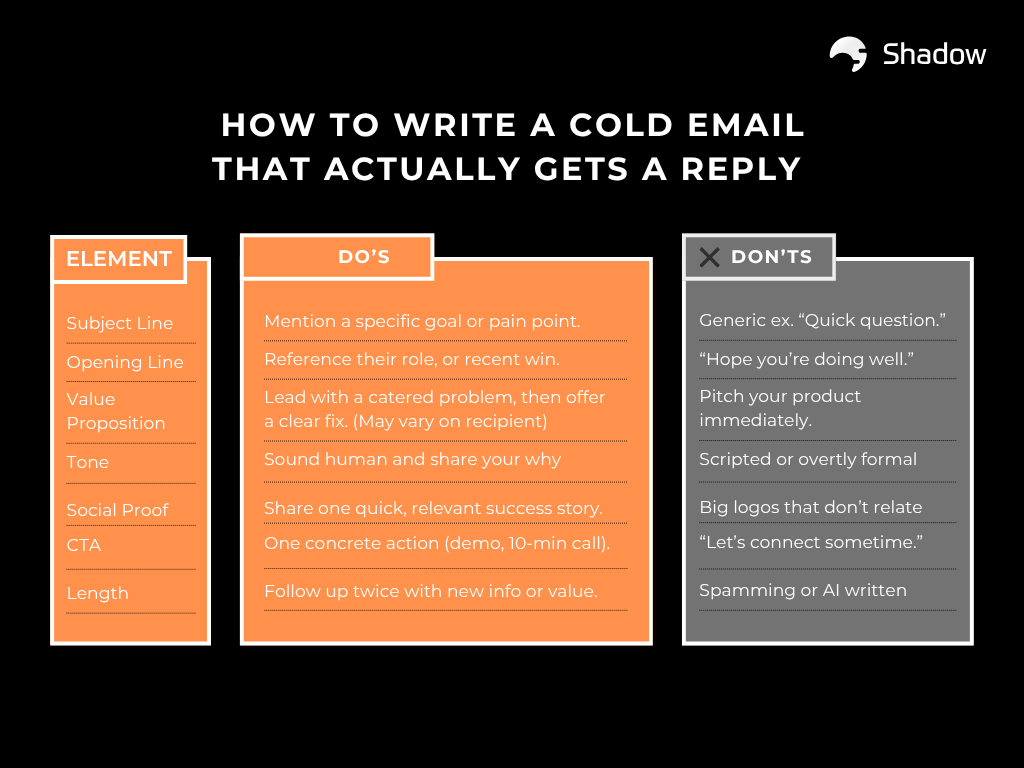How to Write a Cold Email That Actually Gets a Reply (Harvard Business Review Approved)
.png)


Most cold emails die in the inbox. A few get read. Even fewer get a response. The difference is not luck. It is structure, intent, and tone.
Cold emailing has a bad reputation because most people do it wrong. They send generic, automated messages that sound like they were written by a bot. They chase quantity over quality. They forget that behind every inbox is a real human being with limited time and too many messages to read.
But when done right, cold emails work. They open doors to partnerships, customers, and investors that you would never reach otherwise. Here is how to write one that actually gets a reply.
Most cold emails fail for simple reasons. They are too long. They feel like a sales pitch. They talk about the sender instead of the recipient. They use empty phrases like “cutting-edge solutions” or “revolutionary platforms” that mean nothing to the reader. And they end with a weak “Let’s connect” that gives no clear reason to reply.
A bad cold email wastes both sides’ time. The sender gets ignored, and the recipient loses trust in the sender’s brand. If you are going to send cold emails, you need to earn attention fast and prove that it is worth keeping.
Your subject line and first sentence decide the fate of your email. That is how much time you have to prove that you are not spam. If the subject line looks generic, it will be deleted. If the opening line feels automated, it will be ignored.
The goal is to make your reader pause and think, “This feels relevant.” Spend time on these two lines. Write 10 subject lines, not one. Test them. A small improvement here changes everything.
Good subject lines are short, specific, and clear. For example:
And for the opening line, skip the fake personalization like “I came across your profile.” Instead, reference something real: a post they wrote, a product launch, or a shared challenge.
Once you earn those three seconds, the rest of your email should follow a simple formula.
Personalization: Make it obvious that this message was written for them. Mention their company, role, or something specific they said or did. The point is to show that you did your homework. Example: “I saw your post about improving meeting efficiency across remote teams.”
Clear Value: In one or two sentences, explain what you do and how it helps them specifically. Focus on the benefit, not the feature. Instead of saying, “We built an AI note-taking tool,” say, “We help teams save hours each week by turning every meeting into follow-ups and action items automatically.”
Social Proof: People trust proof. Mention customers, results, or recognizable names. This helps reduce friction and builds credibility. Example: “Teams like Acme and Superhuman use us to save two hours per week per person.”
Simple CTA: End with a single, clear next step. Do not bury it under options. Make it low friction. Example: “Would you be open to a quick 15-minute chat next week to see if this might help your team too?”
Here is a cold email that fails:
Subject: Quick question
Hi [Name],
I wanted to reach out because I think our product could help you. We are a leading provider of innovative meeting solutions powered by AI. Our platform helps teams improve productivity and collaboration. Would you be interested in learning more?
This could have been sent to anyone. It has no personalization, no clear benefit, and no reason to reply.
Now here is a better version:
Subject: Saving your team 2 hours a week
Hi [Name],
I saw your recent LinkedIn post about how hard it is to keep remote meetings focused. One thing we hear constantly from distributed teams is how much time they lose chasing follow-ups after every call.
Shadow solves this by automatically turning meetings into summaries and action items. On average, teams save about two hours a week.
We are working with SaaS teams like Acme and Loom to streamline their workflows, and I thought it might be useful for you too.
Would you be open to a quick chat next week to see if this could help your team?
This version feels personal, relevant, and easy to answer.
Keep your email under 150 words. If it takes effort to read, you already lost. Avoid jargon. Plain English builds more trust than buzzwords. Use short paragraphs and white space. People scan before they read. Always follow up. Most replies happen after the second or third message. Test subject lines, CTAs, and tone. Track what actually gets replies. Never beg. Be confident, concise, and respectful of time.

Writing a “mini pitch deck” inside the email. Using deceptive subject lines that trick people into opening. Stuffing in too many links or attachments. Over-apologizing or sounding desperate. Sending without proofreading. A small mistake in tone or structure can ruin an otherwise great message.
Cold emails are not about volume. They are about clarity, relevance, and respect for attention.
When you write like a human being who understands the other person’s challenges, your chances of a response go up dramatically.
Every inbox is a battlefield of noise. The cold emails that win are the ones that sound like they were written for one person, not a mailing list.
Write fewer emails. Write better ones. Make them count.
